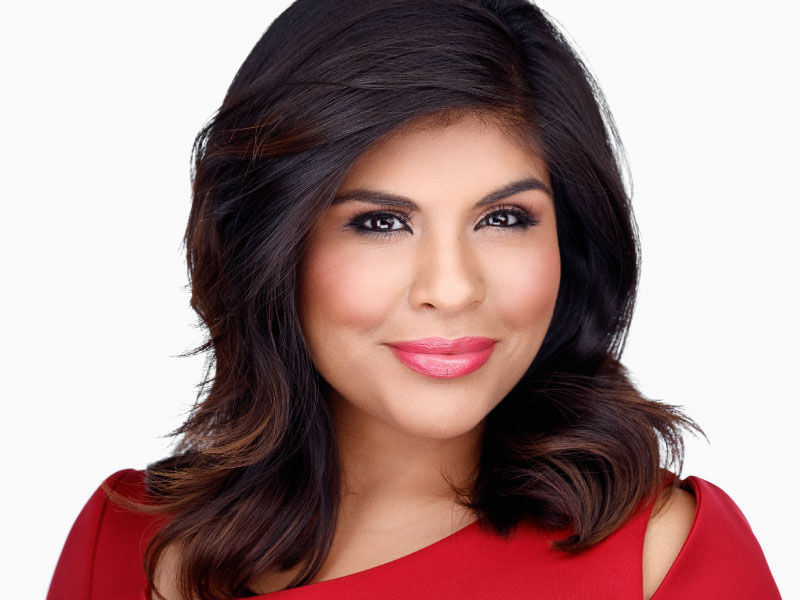News anchor and young stroke survivor shares her journey for World Stroke Day

For Kristen Aguirre, the morning of April 13, 2019, was typical: She worked out in her spin class and volunteered with a local charity.
But as she prepared for her shift as a local news anchor, she felt what seemed like a migraine. The pain was so bad that she considered calling in sick. Instead she decided to take a short, early afternoon nap.
The next thing she knew, her boyfriend was pounding on her door, shouting her name. Aguirre had slept through her 5 p.m. newscast. Disoriented, she stood to answer the door but immediately collapsed, hitting her head on the dresser as she fell. She tried again to get up but couldn't move her left side.
She didn't know what was happening.
"I knew something was wrong, but no one who is 31 thinks, 'I'm having a stroke,'" said Aguirre, who on World Stroke Day on Oct. 29 will emcee the American Heart Association/American Stroke Association One CycleNation national fundraising event.
The digital One CycleNation, which raises awareness about heart and brain health, will take place in various cities with the goal to ride 1 million miles and raise funds for stroke education and research.
Aguirre is thankful to participate in the event after her stroke. She had an ischemic stroke, which occurs when blood flow is blocked to the brain. Doctors aren't sure what caused her stroke — so it's labeled "cryptogenic."
About 80% of strokes can be prevented by controlling risk factors. That means controlling blood pressure, cholesterol and blood sugar; maintaining a healthy weight and diet; not smoking; and getting plenty of exercise.
Stroke can strike anyone — at any age, any time — affecting 1 in 4 people.
"I hope younger adults realize they're at risk, too," Aguirre said. "The more they know about symptoms and risk factors, the better they can do."
She stressed the importance of knowing stroke warning signs and getting help immediately by remembering the acronym F.A.S.T.: Face drooping. Arm weakness. Speech difficulty. Time to call 911. A quick response may improve chances of survival and recovery.
After her stroke, Aguirre spent three months at a rehab center re-learning how to walk and use her left arm and hand.
Initially, "I couldn't even wiggle a toe or a finger," she said. "I worked in TV and was always decked out and then woke up and couldn't even put my hair in a ponytail. I had like zero confidence because I couldn't even recognize myself."
Through social media platforms, she found community and inspiration from other young stroke survivors, especially after doctors told her she may leave rehab in a wheelchair.
"I would see young stroke survivors who were back to dancing, and that really gave me hope," she said, adding that support from friends and family and trust in her medical team were also key.
Aguirre spent her days in occupation and physical therapy and spent her evenings trying to work her muscles independently. She gets emotional recalling the day when she was finally able to wiggle a toe on her left foot.
"Everyone cheered and my physical therapist said, 'This is how it starts. You just need a little spark and that pathway is there,'" Aguirre said. "A month later, I was walking around."
Now living in Chicago, Aguirre has almost completely recovered her fine motor skills and embraces who she is today.
"I'm never going to be that Kristen from April 12, 2019, because so much has changed, physically, emotionally and mentally," she said.
Aguirre is sharing her story to inspire other stroke survivors to keep working toward recovery.
"I want them to know they're not alone, there is hope, and keep pushing," she said.





